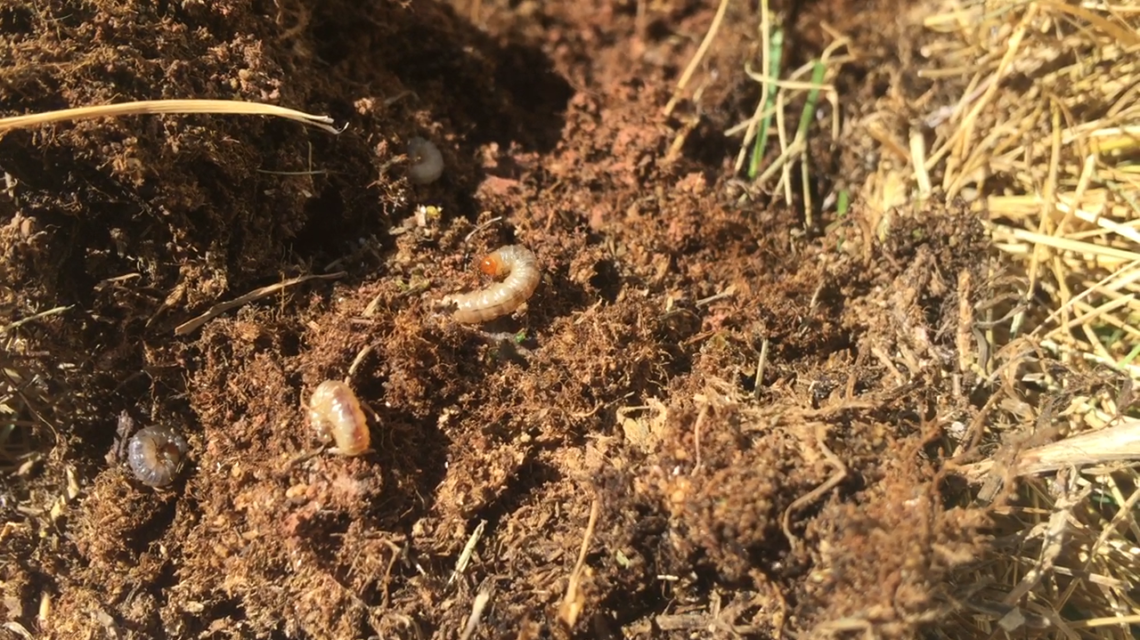Does your lawn look brown in spots—even though it gets the correct amount of water? Lawn grubs can cause uneven, splotchy yellow areas in your grass with green grass blades intermixed throughout. Three common Utah lawn grubs will be explained in this post: billbugs, white grubs, and cranberry girdler.
Billbug
Even though adult billbugs can be seen throughout spring, major, noticeable damage from billbugs usually starts to occur in early summer (when larvae start feeding).
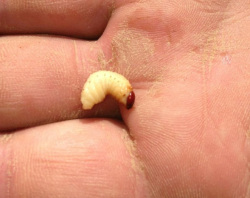

Billbug Life Cycle
Billbug adults hibernate through the winter and come out in early spring. They lay eggs on grass blades in late May and early June. Larvae hatch about two weeks later and start to eat through grass stems, eventually digging into grassroots.
Billbug Description
Billbug adults are little beetles with long snouts. They have grayish-black, wide bodies and measure about 1/4 to 1/2 an inch long. Their larvae are relatively small and white with yellowish-brown heads and no legs. Larvae have thick, fat bodies and are usually about 1/2 an inch long.
Lawn Damage from Billbugs
Both adult billbugs and larvae cause turf damage, but larvae cause the majority of the damage. Larvae feed primarily on the stems, crowns, and roots of the grass, causing serious problems. Affected grass turns yellow; green grass blades stick out amongst the yellow splotches.
To check for billbugs, pull up hard on a fistful of grass. Infested turf will come up easily in a big mat. The larvae will be visible on top of the soil, and you’ll see that the top half of the grass has been completely separated from its roots.
Treatments for Billbugs
Billbug grubs can be killed with a special lawn grub insecticide. Multiple applications may be necessary for large infestations. Stewarts treats for billbugs and other grubs as part of its lawn care program and offers free resprays as needed.
White Grub
The lawn damage and life cycle of white grubs are similar to other lawn grubs. You can tell the difference between the types of grubs by examining them closely.
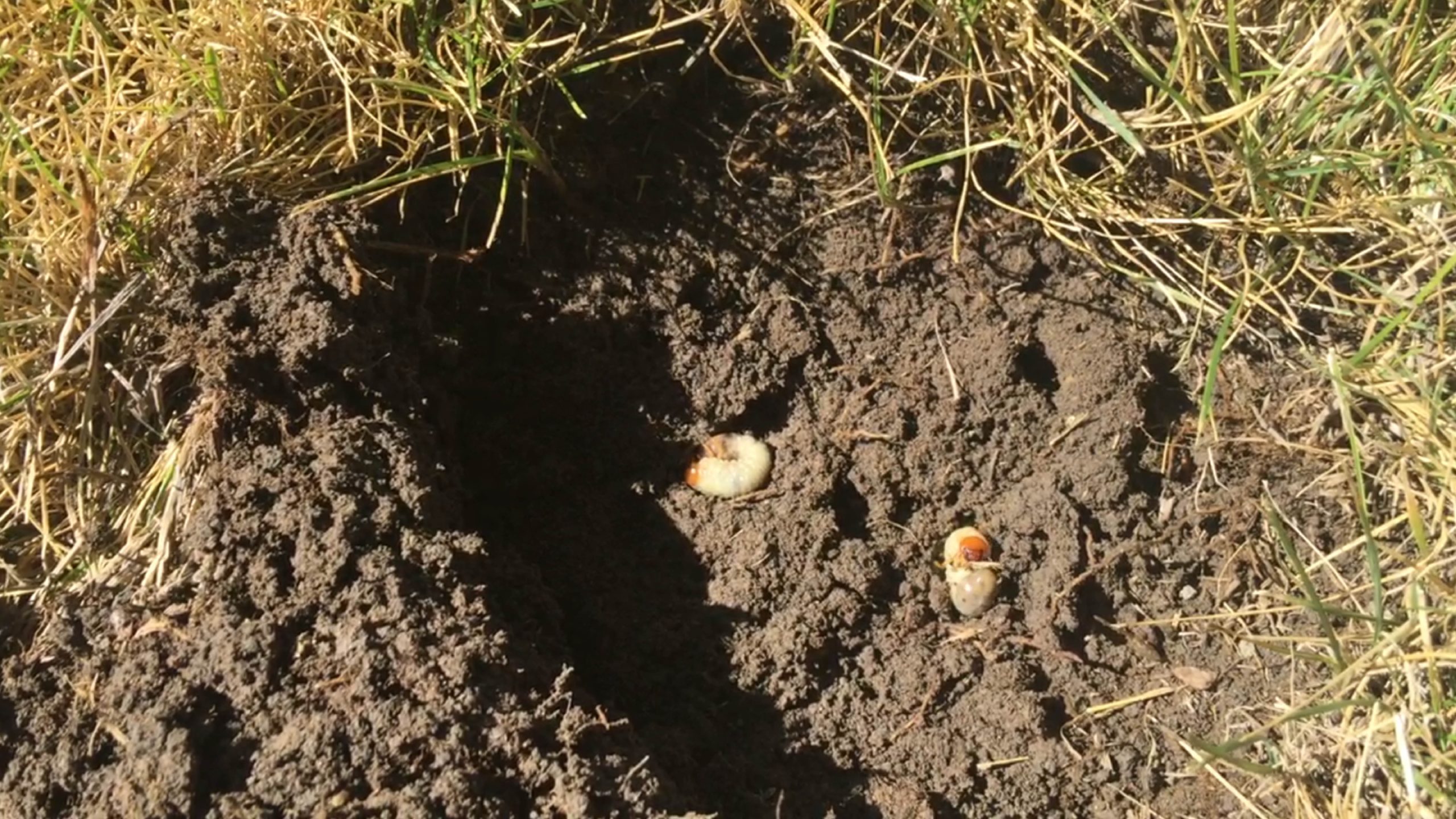

White Grub Life Cycle
Adult beetles lay their eggs in the soil under the lawn during the summer months. Larvae generally hatch two weeks later and start eating the roots of the lawn. White grub larvae feed throughout the fall and then burrow deeper for the winter. They continue to feed on the roots again in the early spring until they finish developing and emerge as adults in late spring.
White Grub Description
Adult white grubs are reddish-orange beetles that measure about 1/2 an inch long. White grub larvae are fat, white, usually curled, and about an inch long. A distinguishing feature of white grub larvae is their three sets of legs—other grubs (like billbugs) are legless.
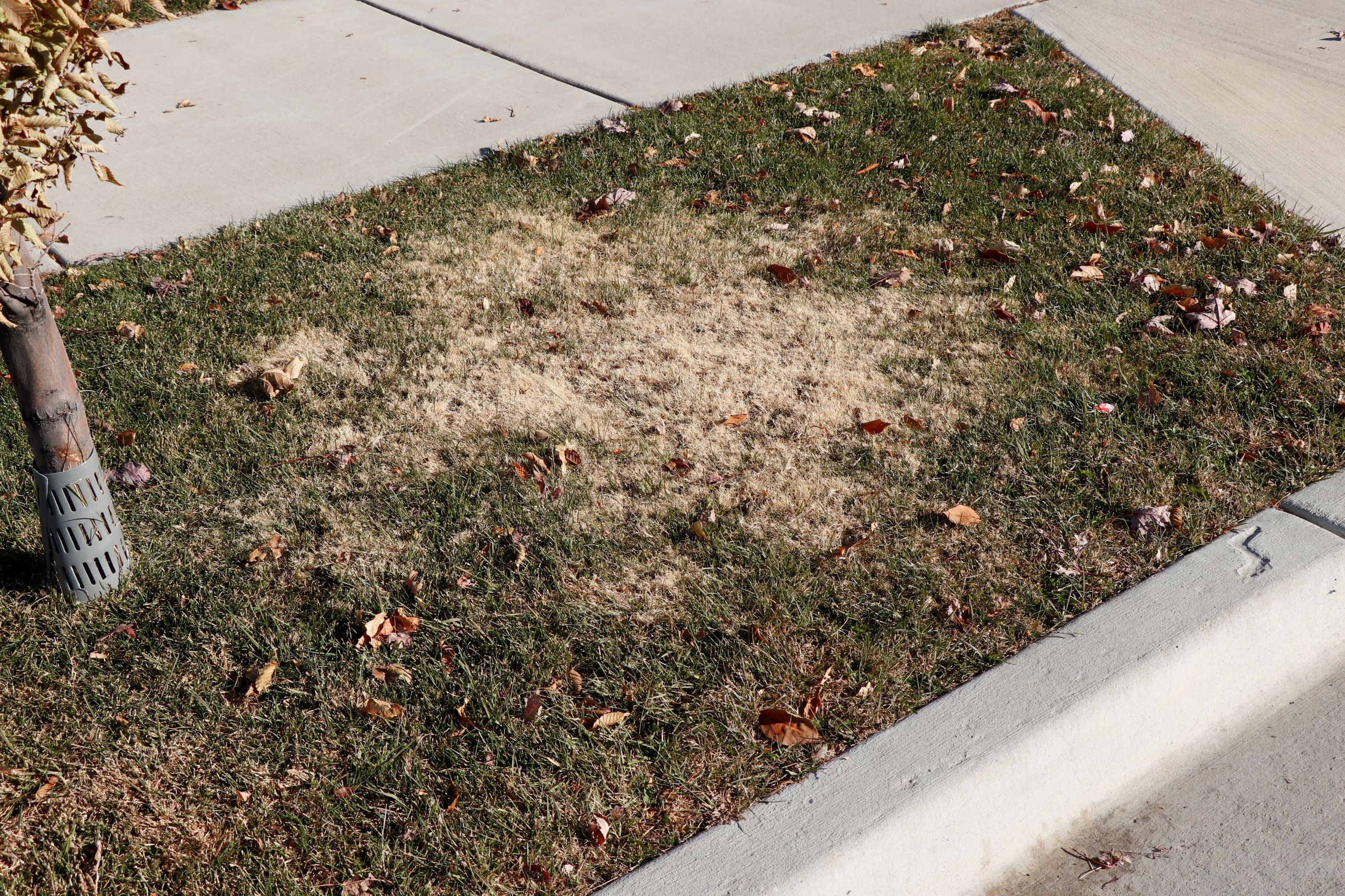

Lawn Damage from White Grubs
The most damage occurs in the summer and fall months when white grub larvae are developing. White grubs create yellow patches of grass where they feed on roots for long periods of time. Some areas of an infestation can begin to look white over time.
Treatments for White Grubs
To get rid of white grubs, spray insecticide on the lawn. This should effectively kill the pest. However, multiple applications may be necessary to completely eradicate them.
Cranberry Girdler
Is your lawn brown despite water from rain and sprinklers? Cranberry girdler, also called subterranean webworm, might be eating the roots of your lawn.


Cranberry Girdler Life Cycle
Adult cranberry girdlers emerge mid-June as moths. After mating, females drop hundreds of eggs per week. The eggs hatch in 9 to 11 days. Larvae bury themselves in the soil and start munching on the roots and crowns of the lawn. When the colder months come, the larvae spin a silk tunnel and overwinter. In the spring they turn into pupae in preparation to become adult webworms. The life cycle starts over again when the webworms emerge as moths in June.
Cranberry Girdler Description
Cranberry girdlers look a little different than other webworms. The larvae have orangish-brown heads and are dirty-white or gray. Adult moths have protruding “snouts” and tube-like wings when resting against their bodies. Their wings have brown and cream stripes, and their front wings are a light sandy color.
Lawn Damage from Cranberry Girdler
Larvae actively eat grass crowns from late summer into fall, killing the lawn. The damage is often confused with drought stress because it causes uneven, yellow patches of turf.
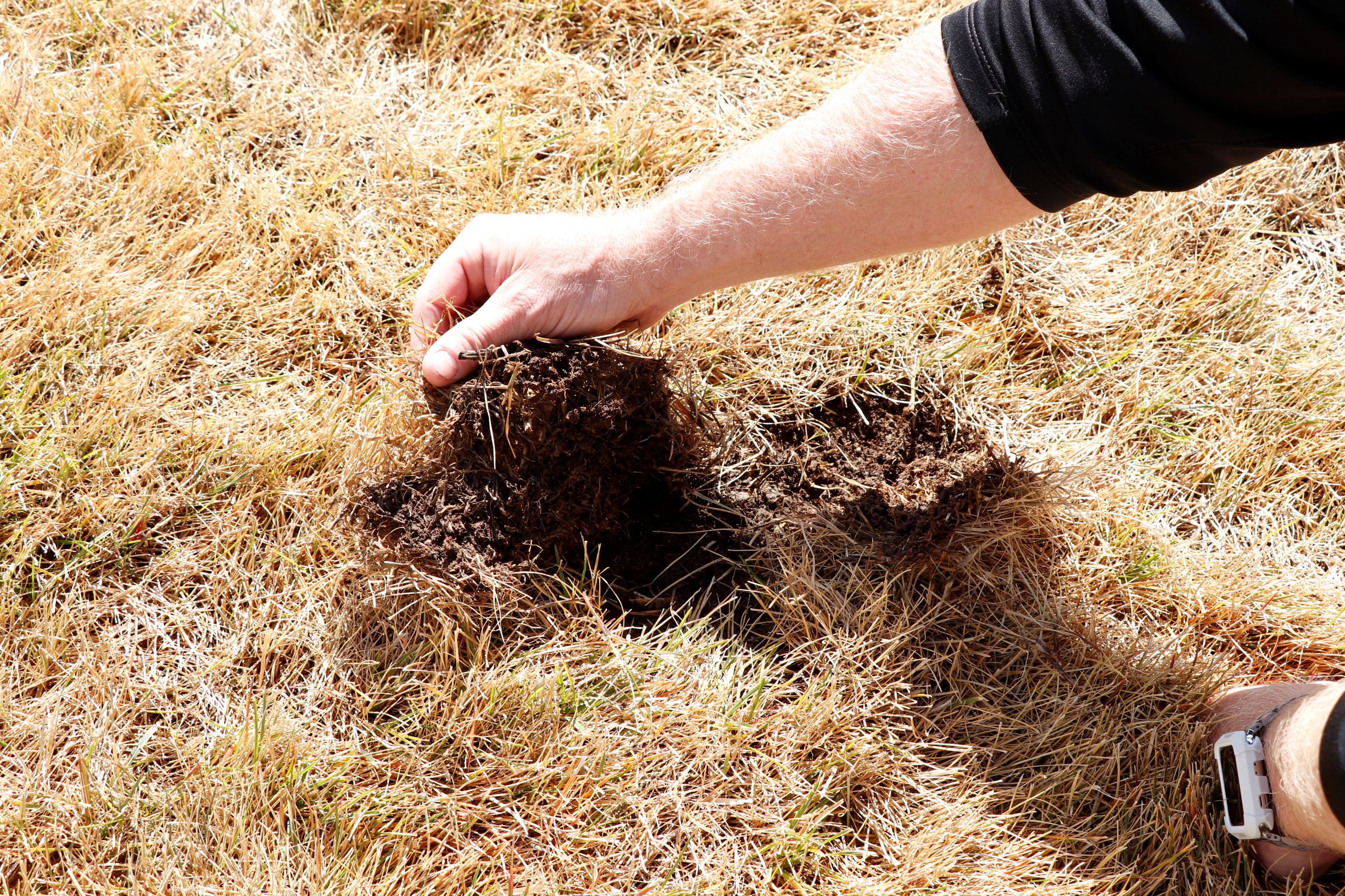

The test for cranberry girdler is the same as checking for billbugs or white grubs: firmly pull up on the grass. If your lawn is infested with the insect, the grass will come up easily, and the roots will remain in the ground. After the lawn is pulled up, you will see the bug. In drastic cases, the lawn will roll up like a rug.
To avoid cranberry girdler damage, make sure your yard is properly irrigated and fertilized according to the season and mowed high in the summer. These insects like to eat overwatered cool-season grasses, such as Kentucky bluegrass, bentgrass, and fine leaf fescues.
Treatments for Cranberry Girdler
After the bug has been eating at the lawn, insect control will get rid of the webworm once the webworm touches the application. If the lawn goes through the fall and winter untreated, the grass will be dead in the winter and unable to grow back in the spring.
Stewart’s has special lawn chemicals to treat for grubs that eat grass. Call 801-226-2261 for a free service quote and more information.
Watch our video for more information about insects that eat the roots of lawns.



